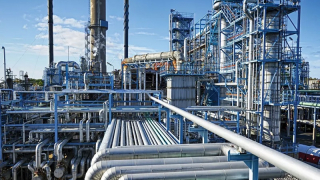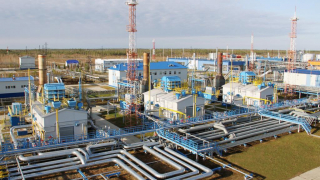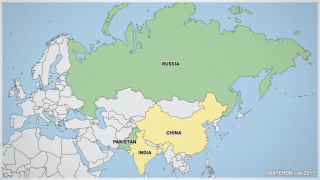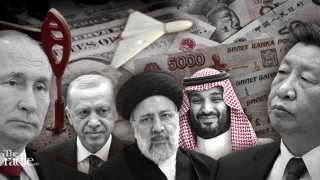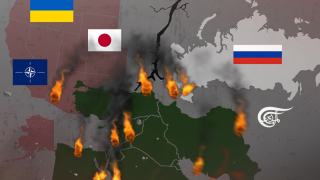Future Of Nuclear Energy
An important event took place in late April 2023: Rosatom, a state corporation of Russia, delivered the first batch of nuclear fuel to the Akkuyu Nuclear Power Plant in Turkey. Around the same time, several European leaders announced that they were not going to impose and support sanctions against the Russian nuclear power industry since it is one of the most promising global trends.
The nuclear is supposed to embrace knowledge-intensive technology and establish a special safety system, which makes it both complex and critical for those countries that rely on this industry.
While both the West and the East see their public opinion perceive nuclear power as potentially dangerous (alluding to the Chernobyl and Fukushima disasters), nuclear power generation has been emerging as a safer and more economical industry due to recent technological breakthroughs.
Those who contribute to the development of this area more systematically and consistently by timely updating and developing their assets gain a competitive advantage.
Until recently, the United States and France were considered leaders in nuclear energy since they had a considerable number of reactors (over a hundred and over fifty respectively). In some countries, such as Germany, Japan, and Sweden, nuclear power plants ensure more than 30% of electricity generation.
Some governments were forced to reduce the share of nuclear power plants or even discuss their complete shutdown due to a green agenda, although Germany revised its plans after the energy crisis began.
The aggregate share of electricity generation at NPPs in China is less than 10% — even despite the fact that more than 50 nuclear power units are operating. Beijing is expected to operate more than 100 power units and become the leader in nuclear power consumption by 2030. Importantly, most nuclear power plants are located on the coast with seawater used in the cooling cycle.
In Russia, nuclear power has been used since the Soviet era. In the 90s, this industry was attacked by eco-warriors strongly backed from abroad. Protests were held and biased media campaigns were launched under a vain pretext of ecological concerns. As it turned out later, the Open Society Institute founded by George Soros and similar globalist organizations were behind many of them. Besides, Greenpeace quite openly opposed the operation of nuclear power plants in post-Soviet countries. It is clear that all those entities favored the shutdown of these plants to help Western companies come in their stead, isn’t it?
Rosatom Corporation of Russia is currently providing a full nuclear fuel cycle, from the extraction and enrichment of uranium to the building, maintenance, and decommissioning of nuclear power plants.
The Company’s separate business area covers the design, construction, and operation of small nuclear power plants, which is quite a promising project, especially for remote areas where electricity supply is needed. One of these power stations is the world’s first floating nuclear power plant located in the Chukotka Region.
Rosatom is also developing new technologies to make the transition to a competitive two-component energy system based on a closed nuclear fuel cycle (CNFC) which will improve the breeding of plutonium used as nuclear fuel and increase significantly the fuel base of nuclear energy where the need to extract natural gas is eliminated. According to experts, it is no exaggeration to say that this year has marked for the Company an advancement in developing technologies for the closure of the nuclear fuel cycle.
In 2022, the BN-800 fast breeder reactor in the Sverdlovsk Region started operating at full capacity. A high-capacity pilot commercial power unit with a BN-1200M “fast” reactor will be launched at the Beloyarsk NPP.
In Seversk, Tomsk area, a pilot demonstration energy complex will be built with a safe and environmentally friendly system that excludes accidents.
Besides, in 2022, nuclear power plants in Russia set a new record for total electricity generation: almost 223.3 billion kWh, which is 900 million kWh more than in 2021.
The icebreaking fleet also owes its current standing to the effort of Rosatom since ships have nuclear power plants.
In addition, when it comes to various foreign projects to build nuclear power plants and contracts to supply fuel or provide different services, Russia’s nuclear power complex is the world’s leader today.
It goes without saying that the Company develops other areas as well since the atom can be used in a variety of areas ranging from fundamental research and the production of various materials to medicine.
An example of international cooperation on medicine is the Russian-Bolivian Nuclear Research and Technology Center in El Alto. It is to provide the Bolivian healthcare system with own radiopharmaceutical production to carry out clinical trials with the expected scope of service exceeding 5,000 patients per year. In the future, the operation of this complex will allow full import substitution of radiopharmaceuticals of Bolivian medicine. This means that Russia is helping to get more sovereignty in this area. Of course, such projects serve as a model to promote Russia’s cooperation in this area with other countries in Latin America, Asia, and Africa.
The United States is striving to overtake Russia and China in the nuclear energy race. Dilenschneider Group Inc. made a special report on nuclear power in the United States in early 2023. The authors are optimistic about the operation of nuclear power plants in the near future. It noted that new Small Modular Reactors (SMRs) are far safer than traditional plants because they utilize natural circulation and have improved economics due to lower capital costs and shorter construction times. The U.S. Nuclear Regulatory Commission recently issued approval for the first SMR design to be deployed in the U.S., while GE Hitachi Nuclear Energy signed a contract to build the first SMR in Ontario, Canada. Backed by the U.S. government, Lightbridge Corp. based in Reston, Virginia, is testing an advanced nuclear fuel that can produce more electricity at existing power plants and the new SMRs and improve their safety significantly.
The need for non-carbon-emitting power combined with technological advances has spurred the federal government in pouring an enormous investment into the nuclear industry. At least $40 billion is to be allocated over the next decade. That will be on top of the billions expected from private investors in the coming years. Last year alone, the projects on designing new reactors gained roughly $5 billion in private money.
It is worth noting, however, that the government of Kazakhstan has recently passed a resolution allowing the disposal of stakes in three uranium enterprises in favor of Uranium One Inc., a Rosatom subsidiary. Therefore, Russia has gained control over the global uranium supply chain.
Kazakhstan was the leader in uranium mining: it produced approximately 40 of all world supplies. Thus, Russia now controls the main uranium mining sites, albeit indirectly. Other uranium-producing countries take lesser shares in the industry (Australia: 12%, Namibia: 10%, Canada: 8%). Generally, only two of the top ten countries where uranium is mined belong to the collective West — Canada and Australia. Two African countries — Niger and South Africa, and one Central Asian country — Uzbekistan are engaged in uranium mining.
The largest players in the nuclear fuel market are TVEL, which is part of Rosatom, the French Areva, and the American Westinghouse (a division of Japanese Toshiba). In addition, Japan still has Japan Nuclear Fuel Limited and Mitsubishi Heavy Industries. Westinghouse is known for aggressively lobbying to sell its products to Eastern European countries, including Ukraine. Although their fuel is not technically suitable for Soviet (Russian) reactor models.
Now atomic energy cooperation with Russia largely depends on European countries being obsequious to Washington. Thus, Finland refused to build the Hanhikivi-1 nuclear power plant under the Rosatom project. Now there are lawsuits due to the contract termination. But Hungary gave the go-ahead for the construction of two new power units of the Paks NPP. This is definitely a certain criterion of the country’s sovereignty. More prudent governments prefer to take care of their energy security in advance by taking the most favorable and sensible position. Although Germany, which was supposed to participate in the project, boycotted Hungary, and Siemens has still not obtained the required permission from the government. Such intrigues reveal real contractual capacity problems within the EU itself, while Russia’s neighbor Kazakhstan is also interested in Russia ensuring the construction of a nuclear power plant with four power units.
Presumably, it will be built near Lake Balkhash. Turkey is building an Akkuyu NPP consisting of four power units with a total capacity of 4,800 MW, which is the largest project in the history of Russian-Turkish cooperation. It should be noted that the construction site of the station was not damaged during recent earthquakes.
Meanwhile, the development of hydrogen energy is also one of the priorities of Rosatom Corporation. This suggests that the company is working as a catalyst for new areas, using technical and scientific knowledge, as well as existing assets, to develop in promising sectors. Hydrogen energy is considered one of the most relevant areas in green alternative energy due to the possibility of using renewable sources. Although there is still a blue, red, and gray color classification, where red is just associated with atomic energy, that is, hydrogen is produced with its help and water electrolysis. In the future, hydrogen fuel can also be used for transportation with the development of a proper infrastructure of hydrogen filling stations.
In this context, nuclear energy is a more complex system than conventional electricity generation. The advancement of Russian scientists and specialists in this field will provide Russia with the required competitive advantage.




